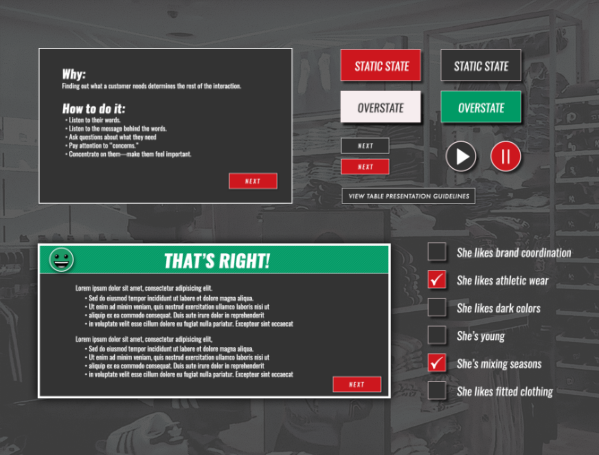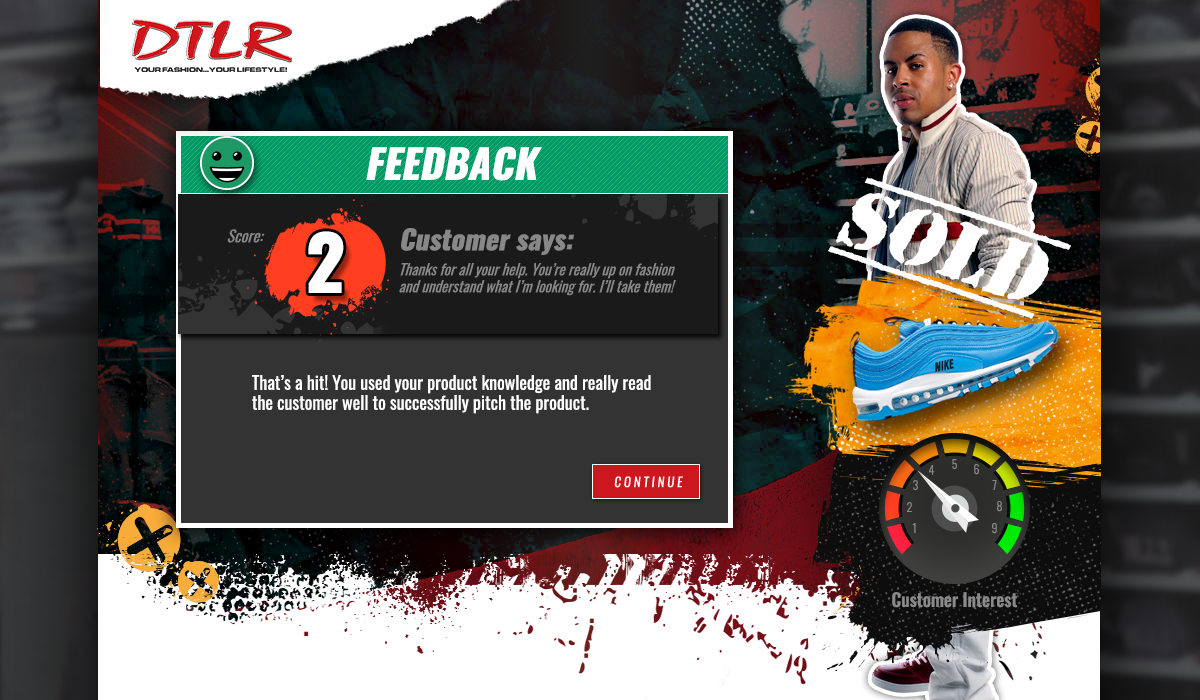
DTLR
personI was the sole designer and developer on this project. While I collaborated with team members on feedback, the work shown is my own unless otherwise noted.
Responsibilities:
Tools Used:
Overview
DTLR (Downtown Locker Room), a leading urban retailer, required a dynamic and engaging e-learning course to onboard new employees. The course needed to educate incoming staff on store operations, customer analysis, and the broad range of products sold while capturing DTLR's distinctive, edgy brand style. It was crucial that the training reflected the vibrant atmosphere of the stores and resonated with the target audience—both the employees and the customers.
Learning Objectives
- Equip employees with a thorough understanding of DTLR store operations and policies.
- Train staff on how to assess and analyze customer needs effectively.
- Familiarize employees with the diverse product range available in DTLR stores.
- Engage employees in an immersive learning experience that aligns with the brand's distinctive urban style.









